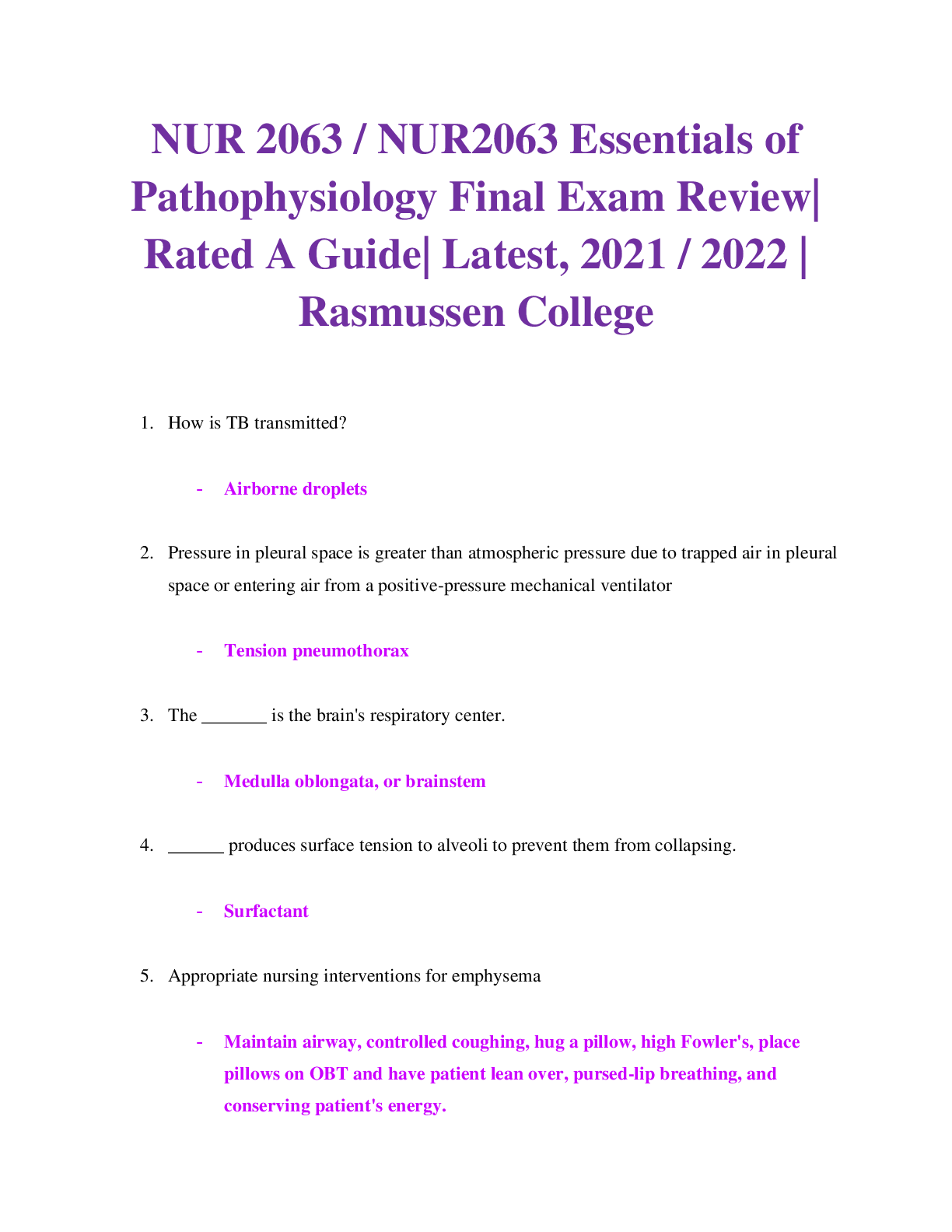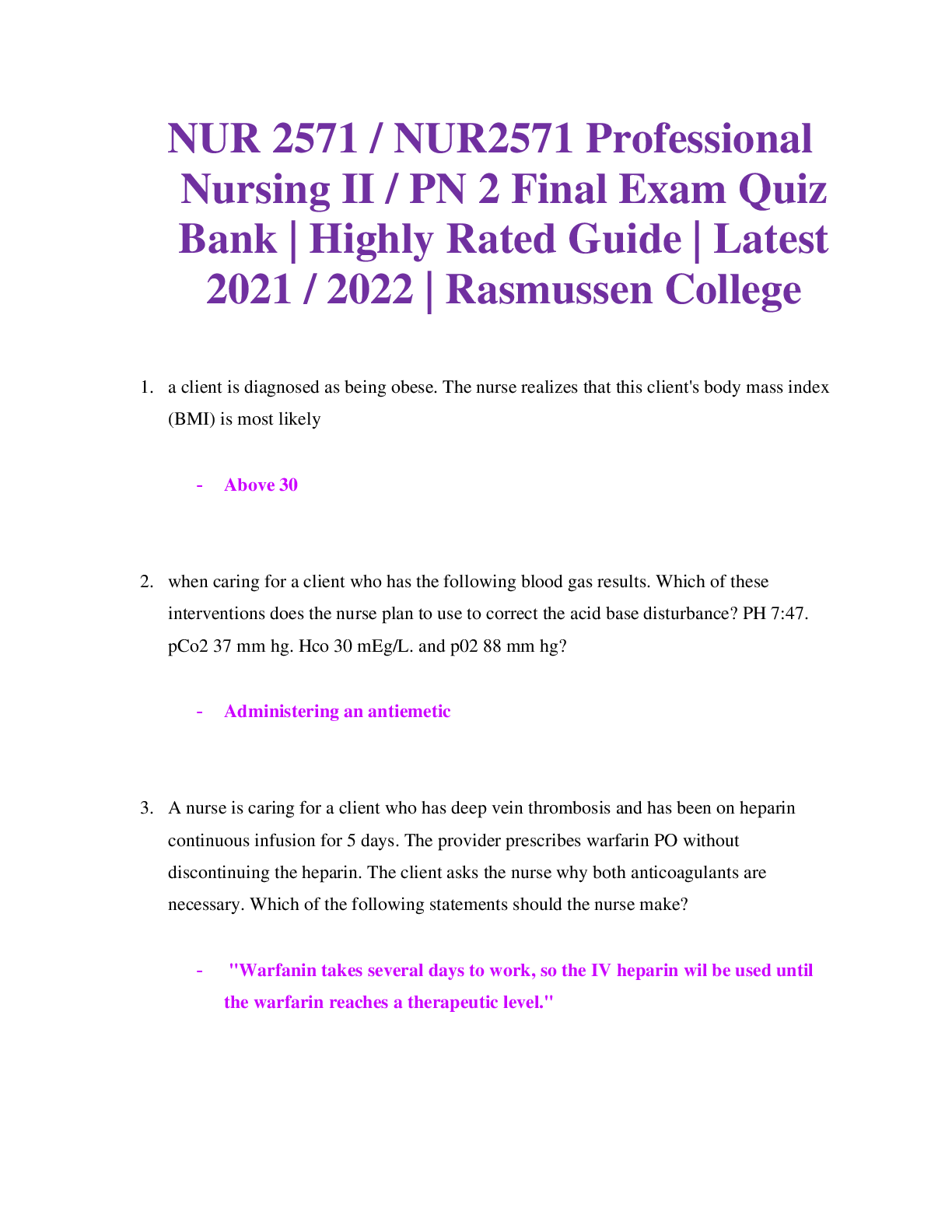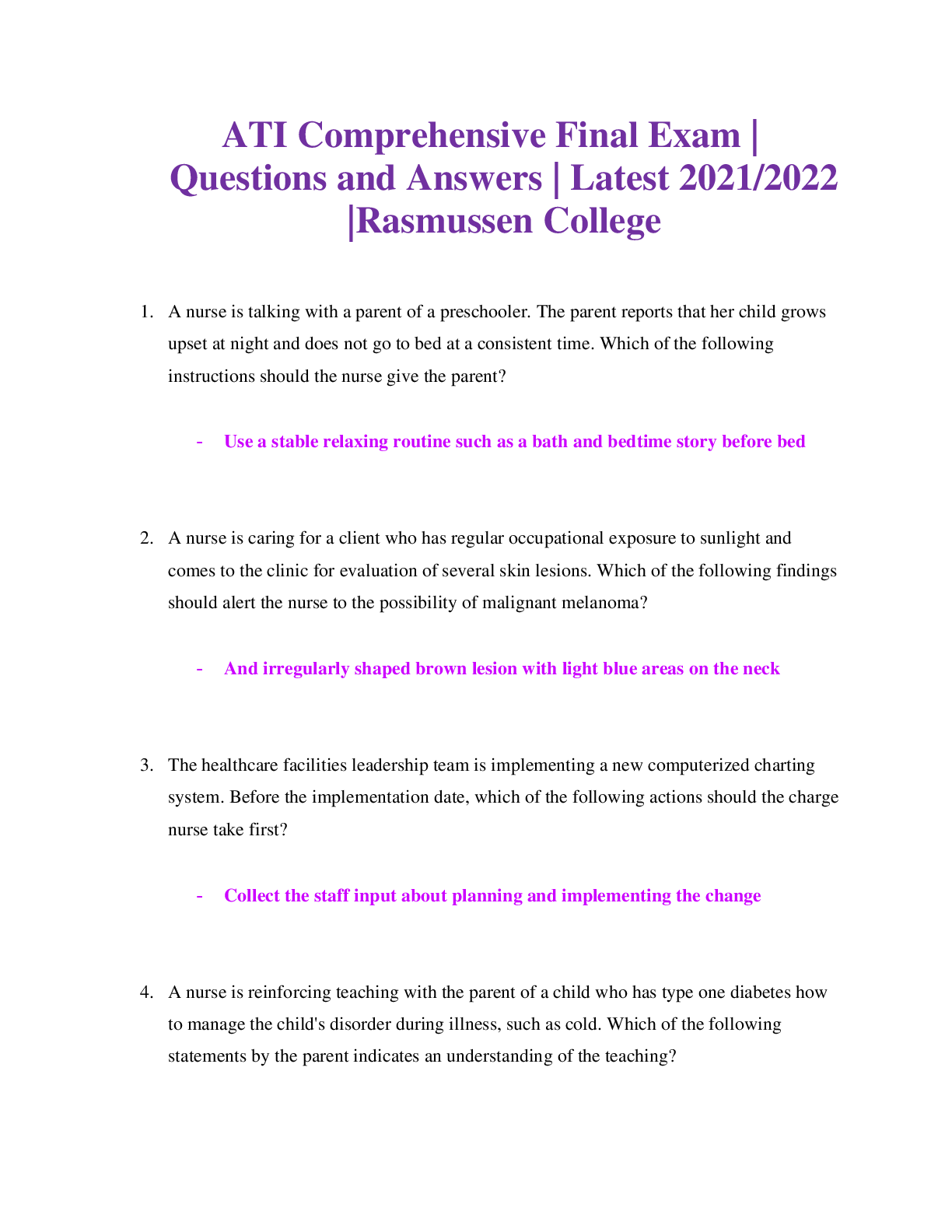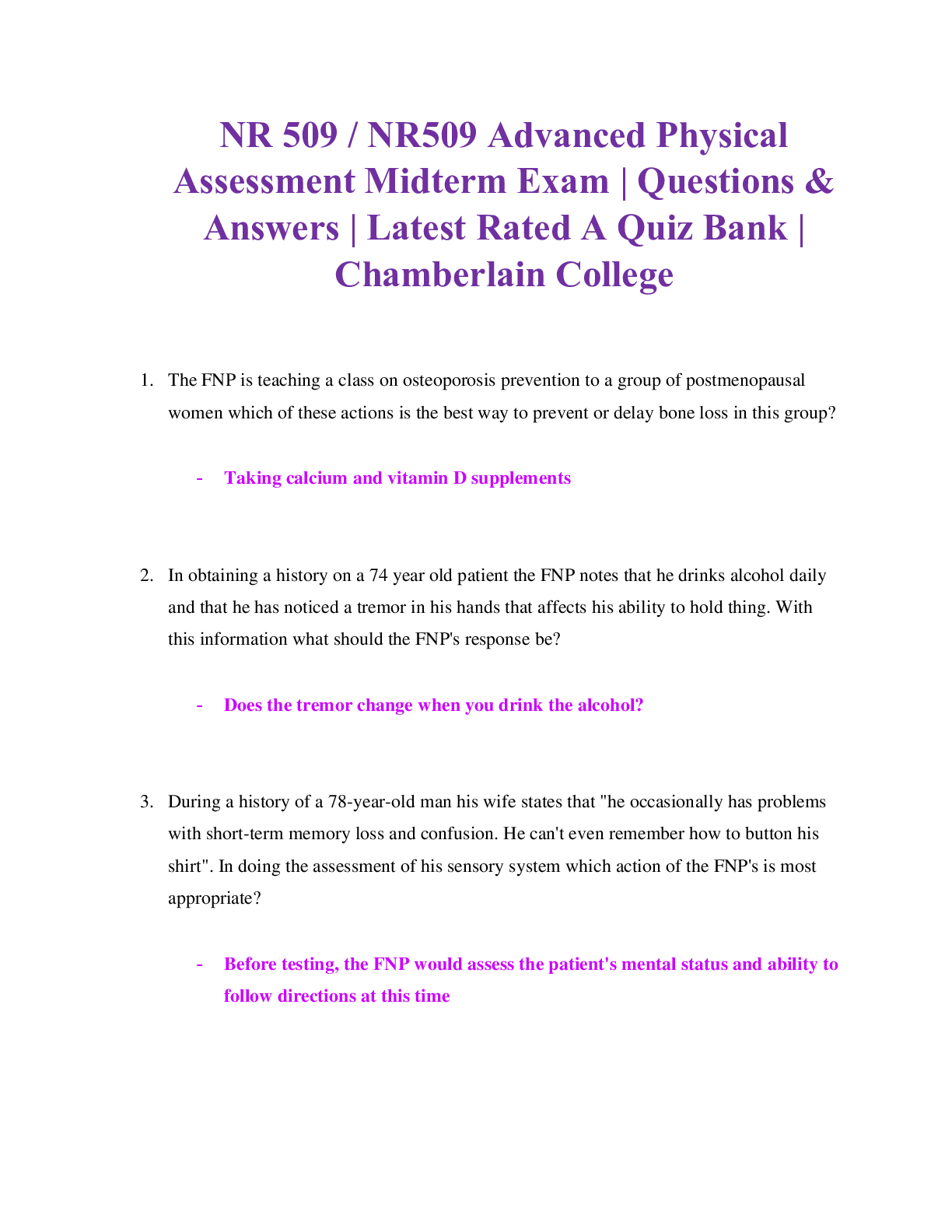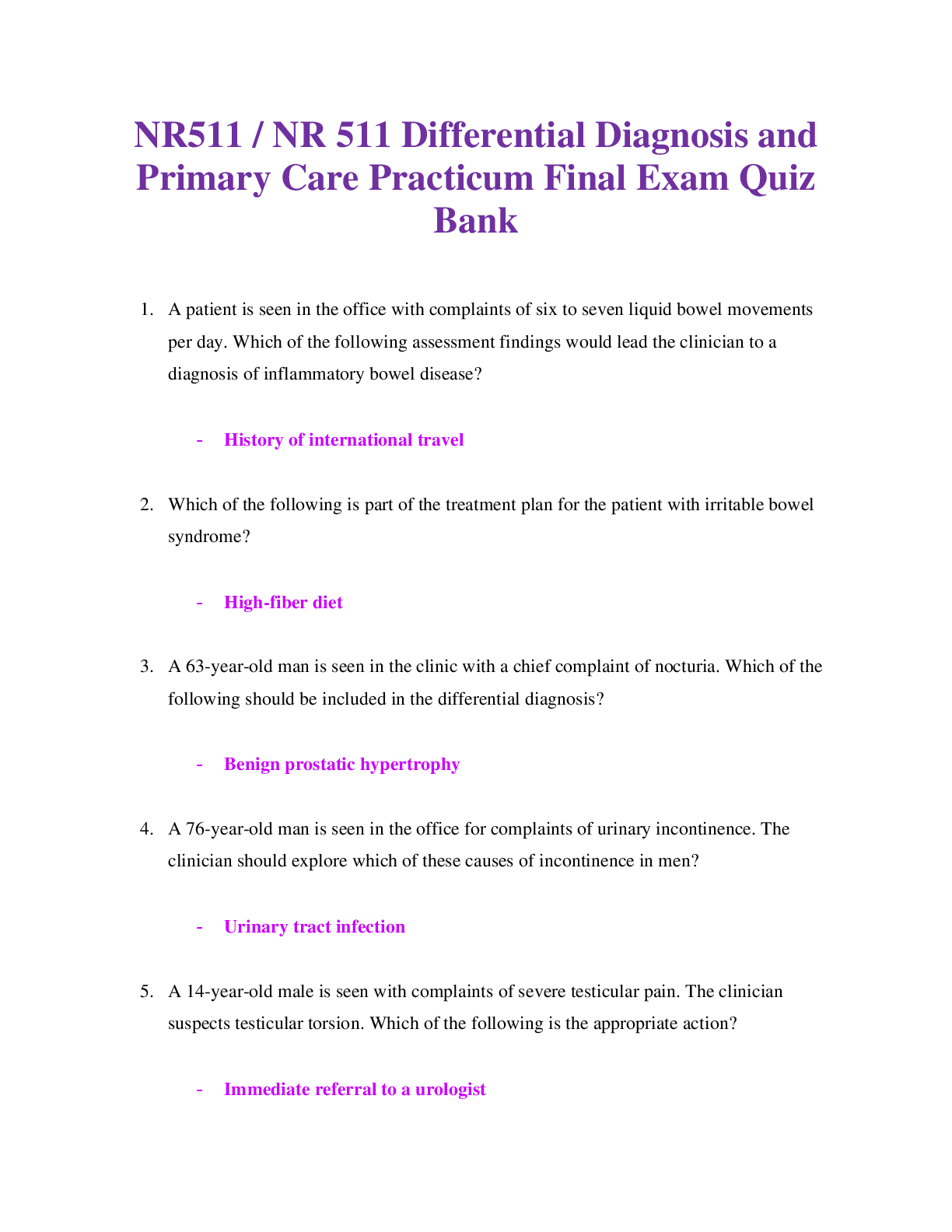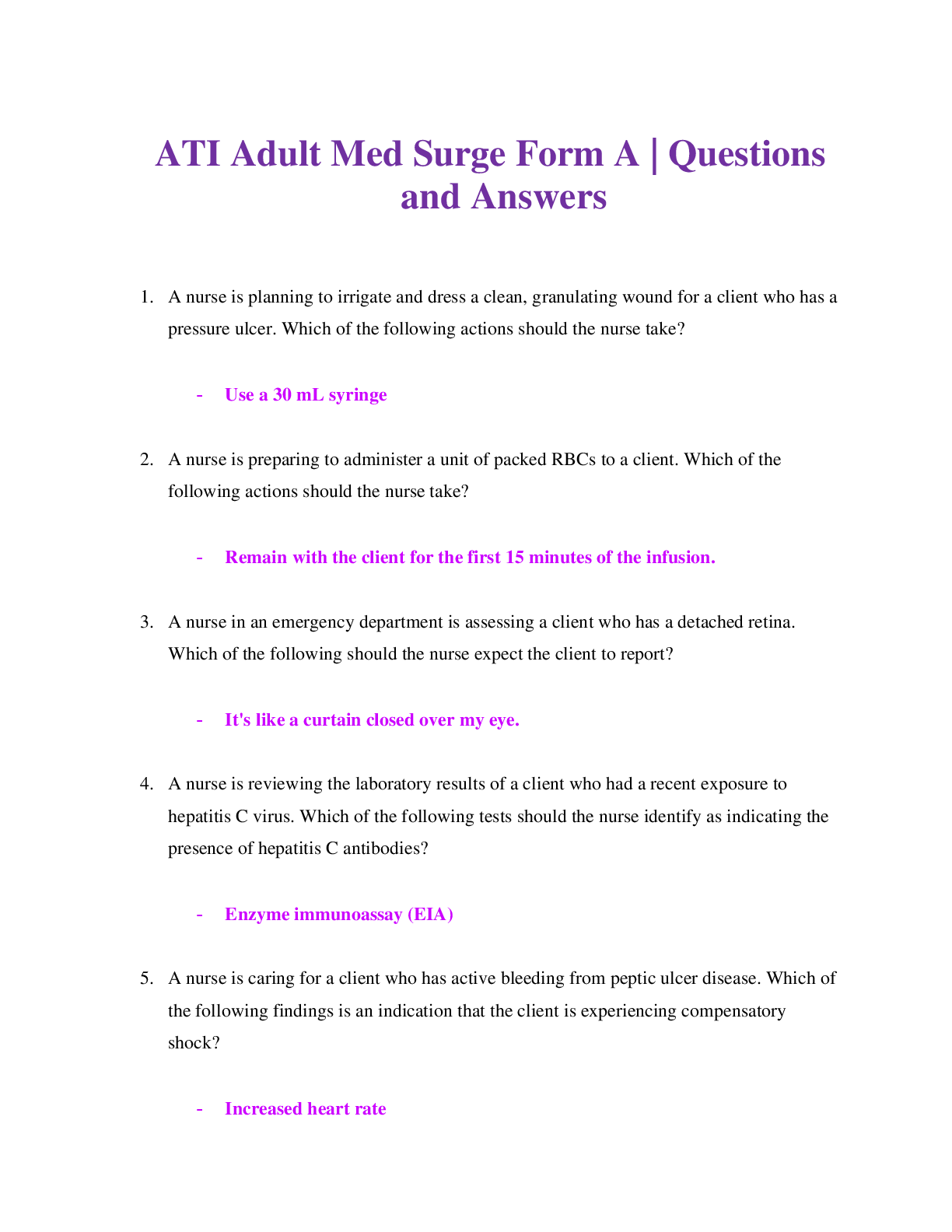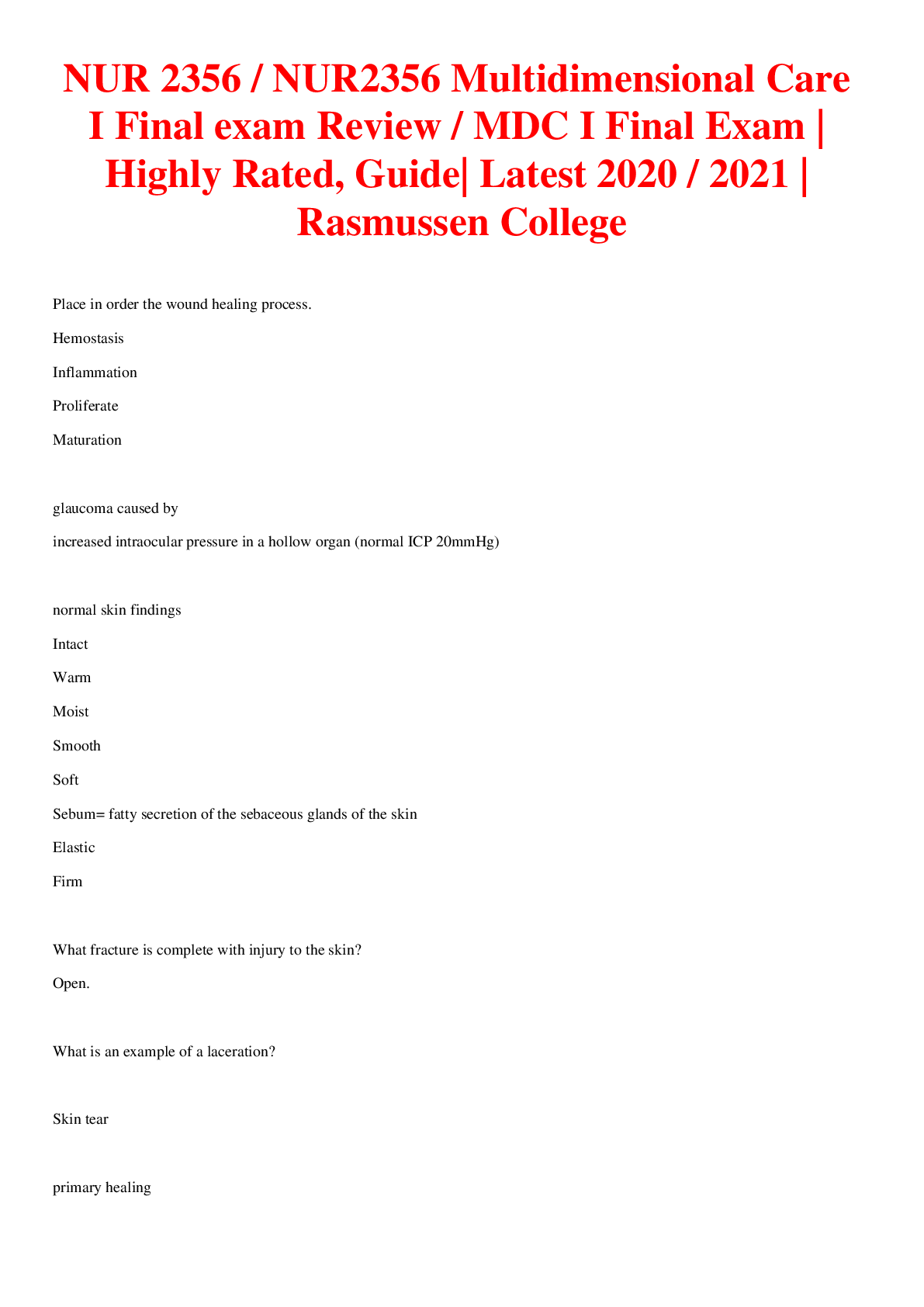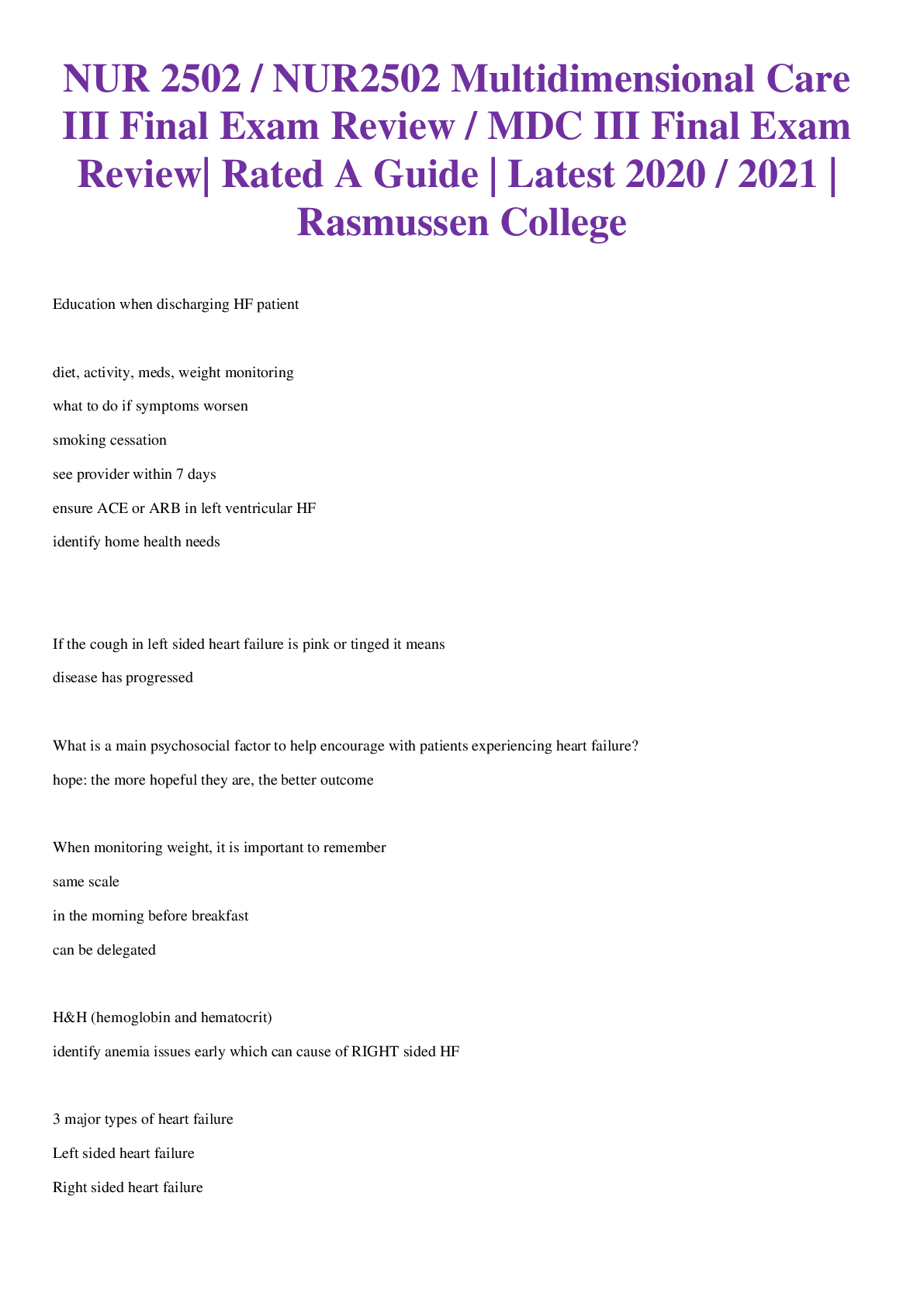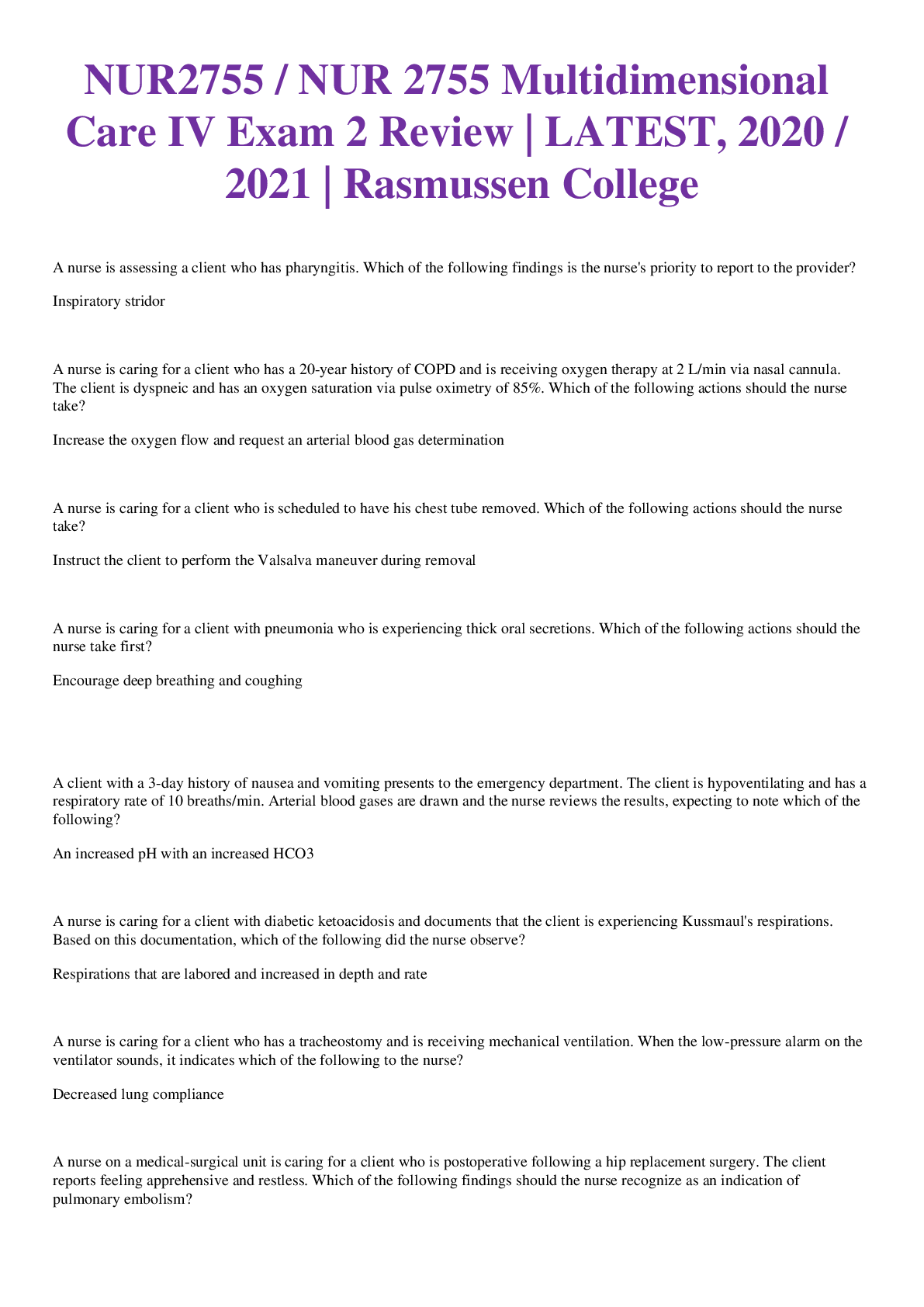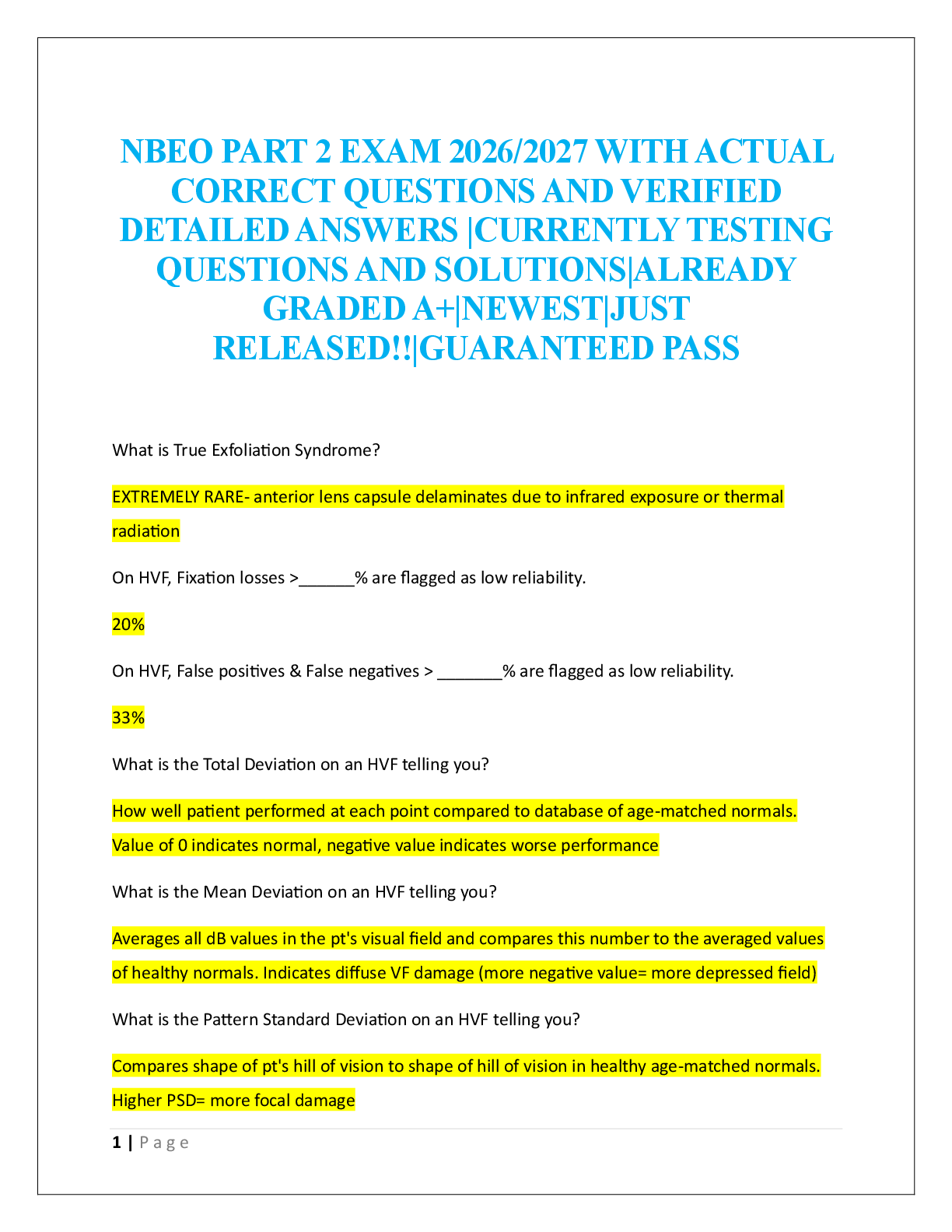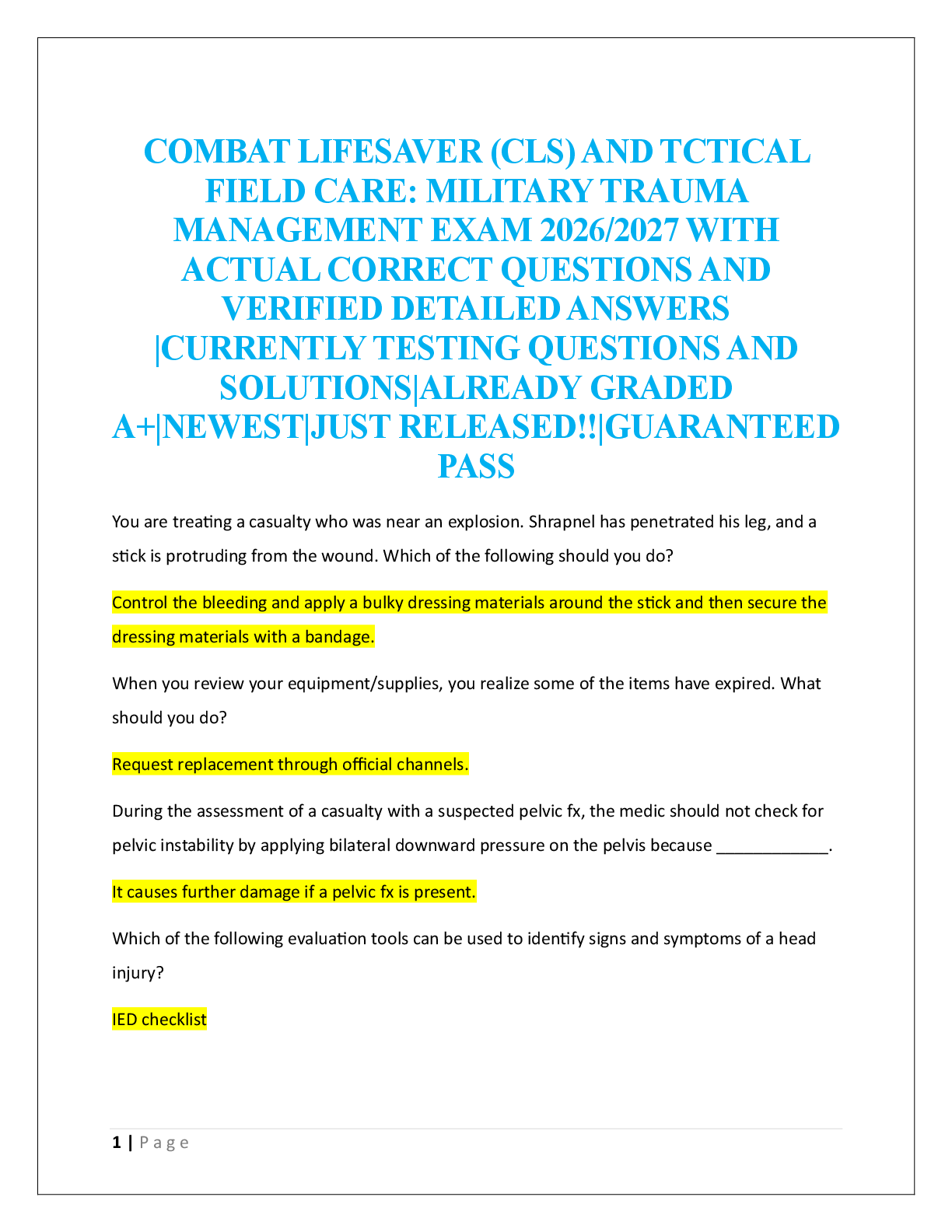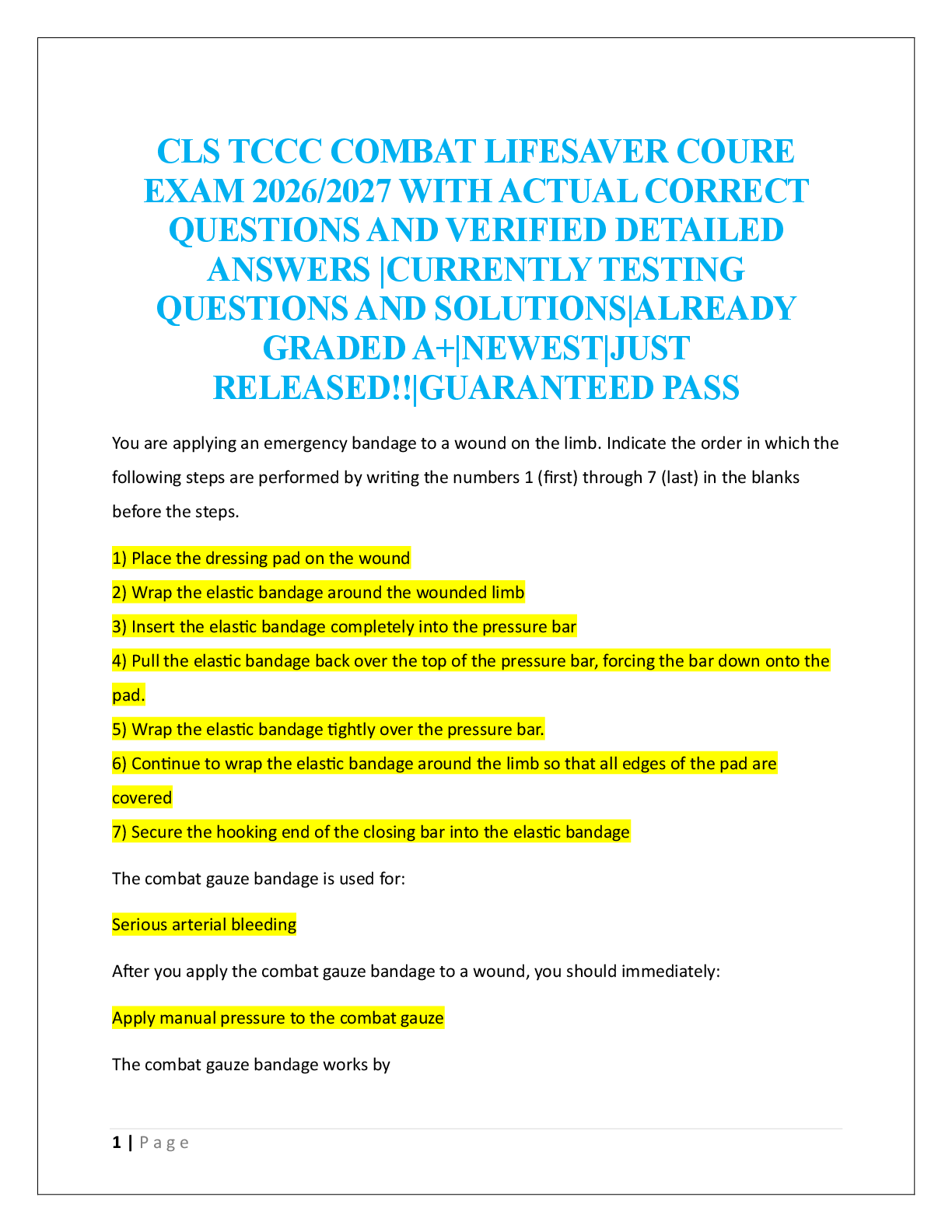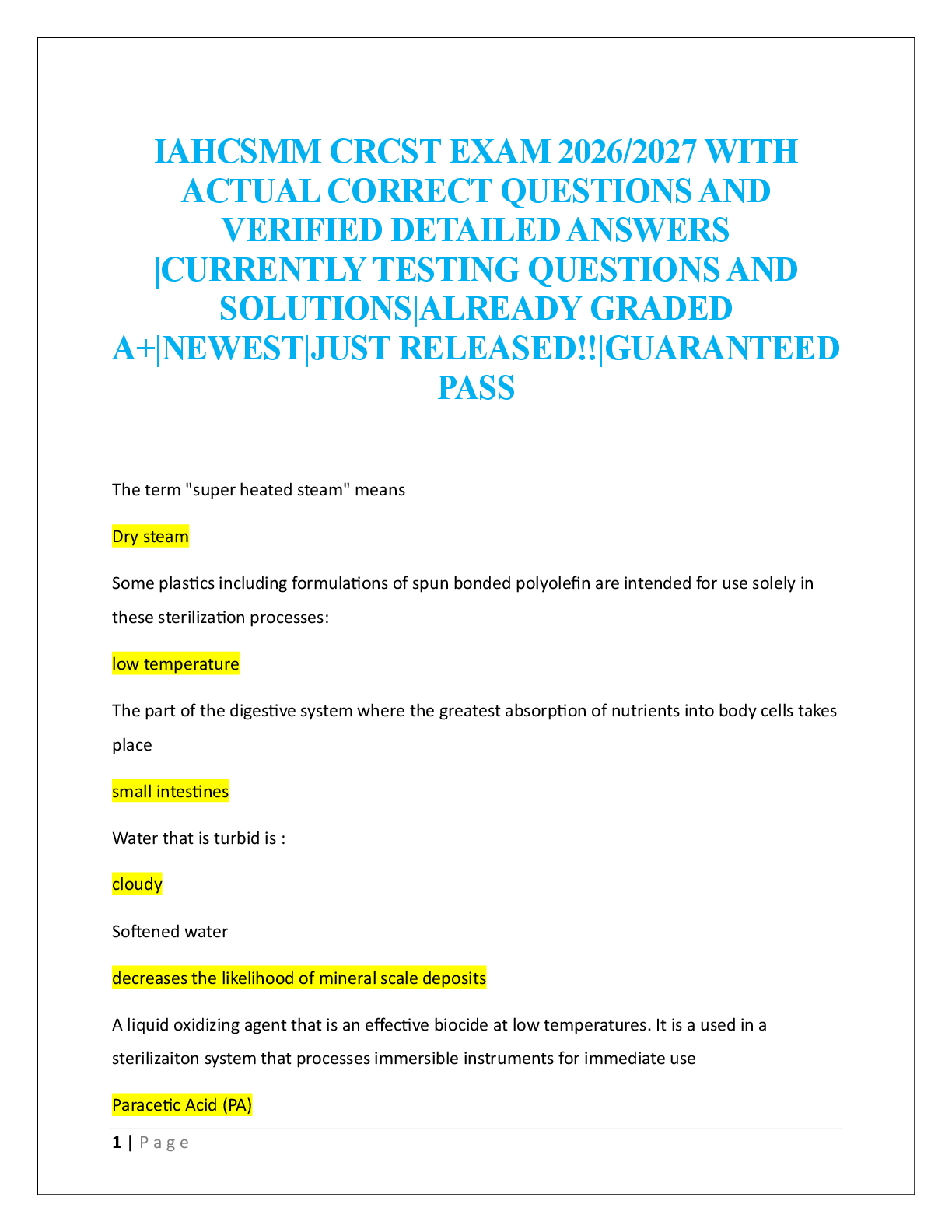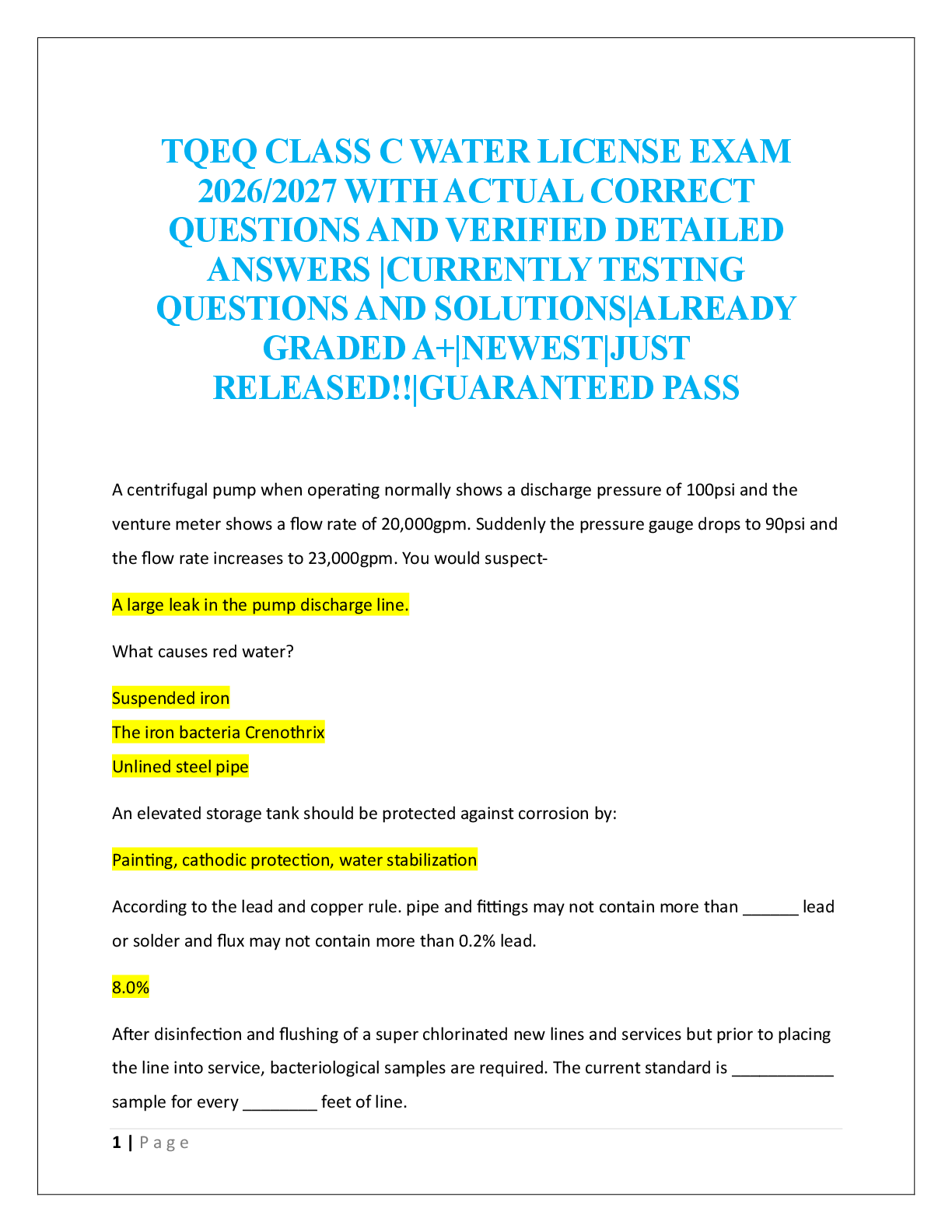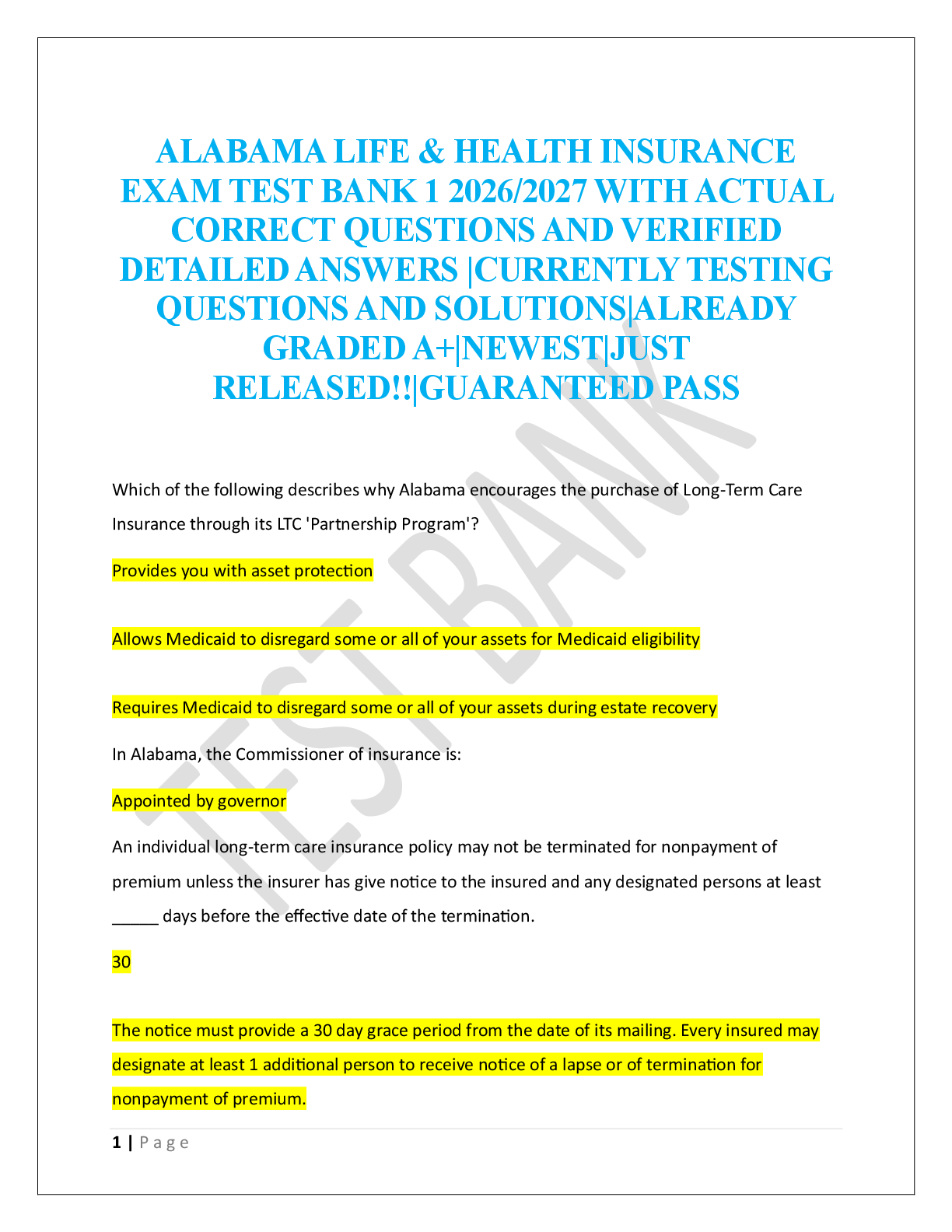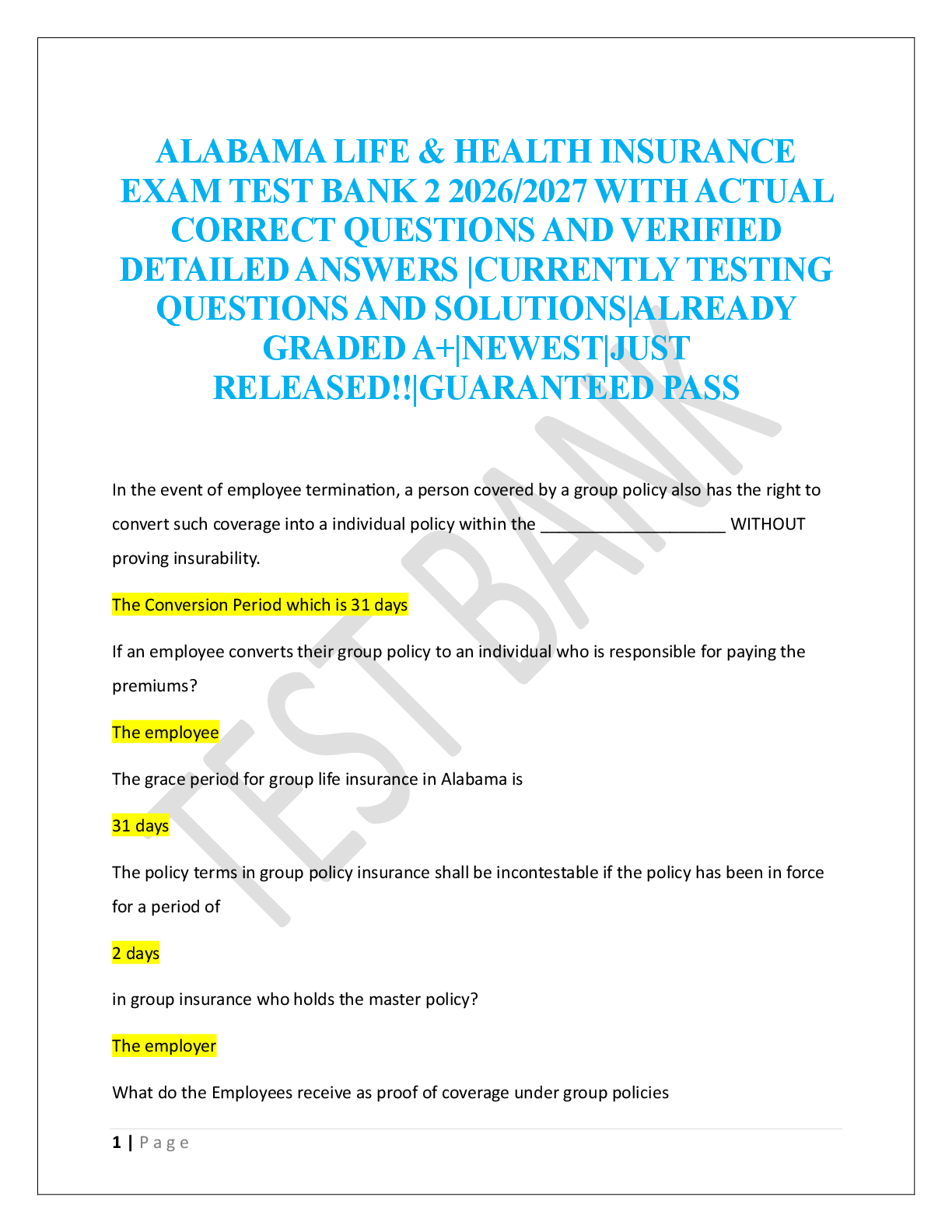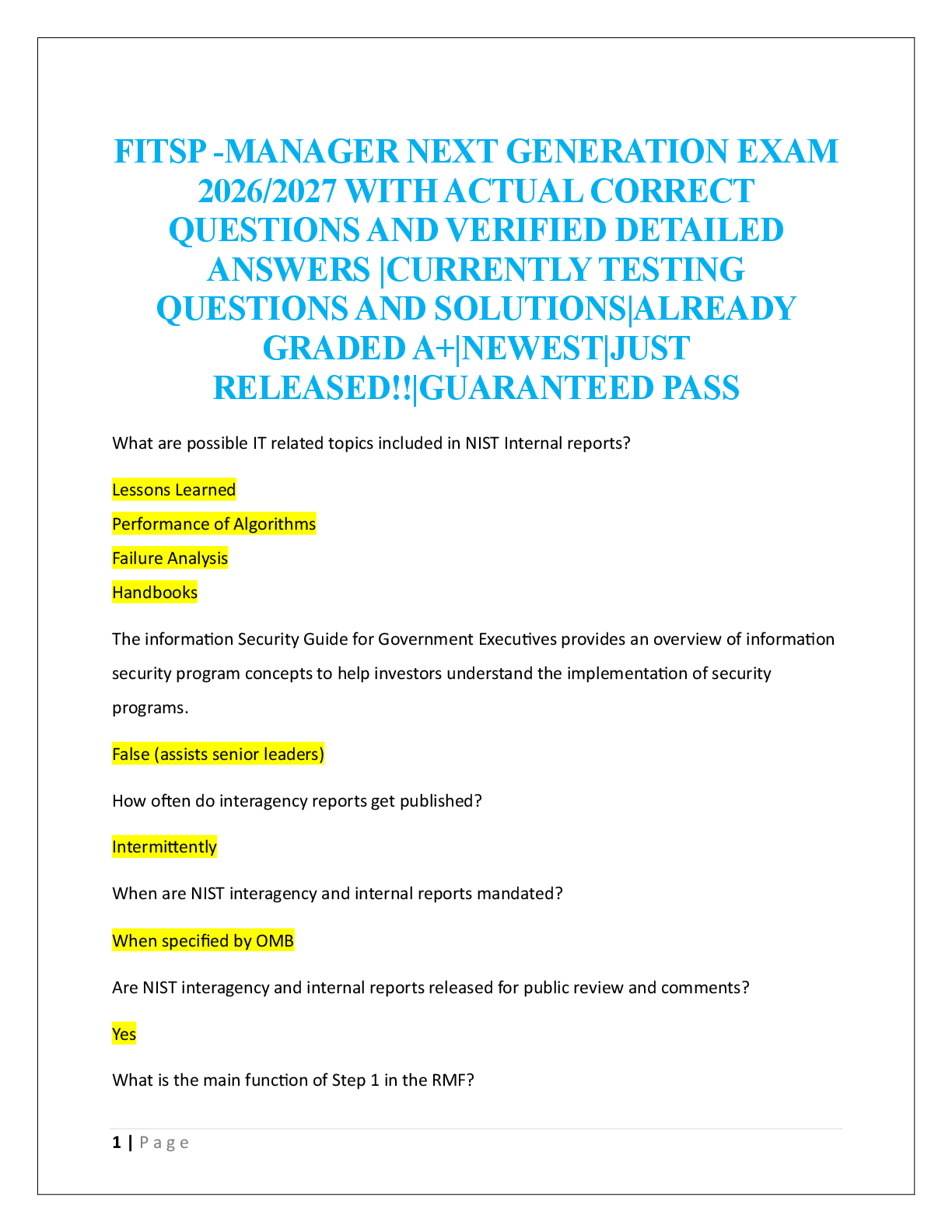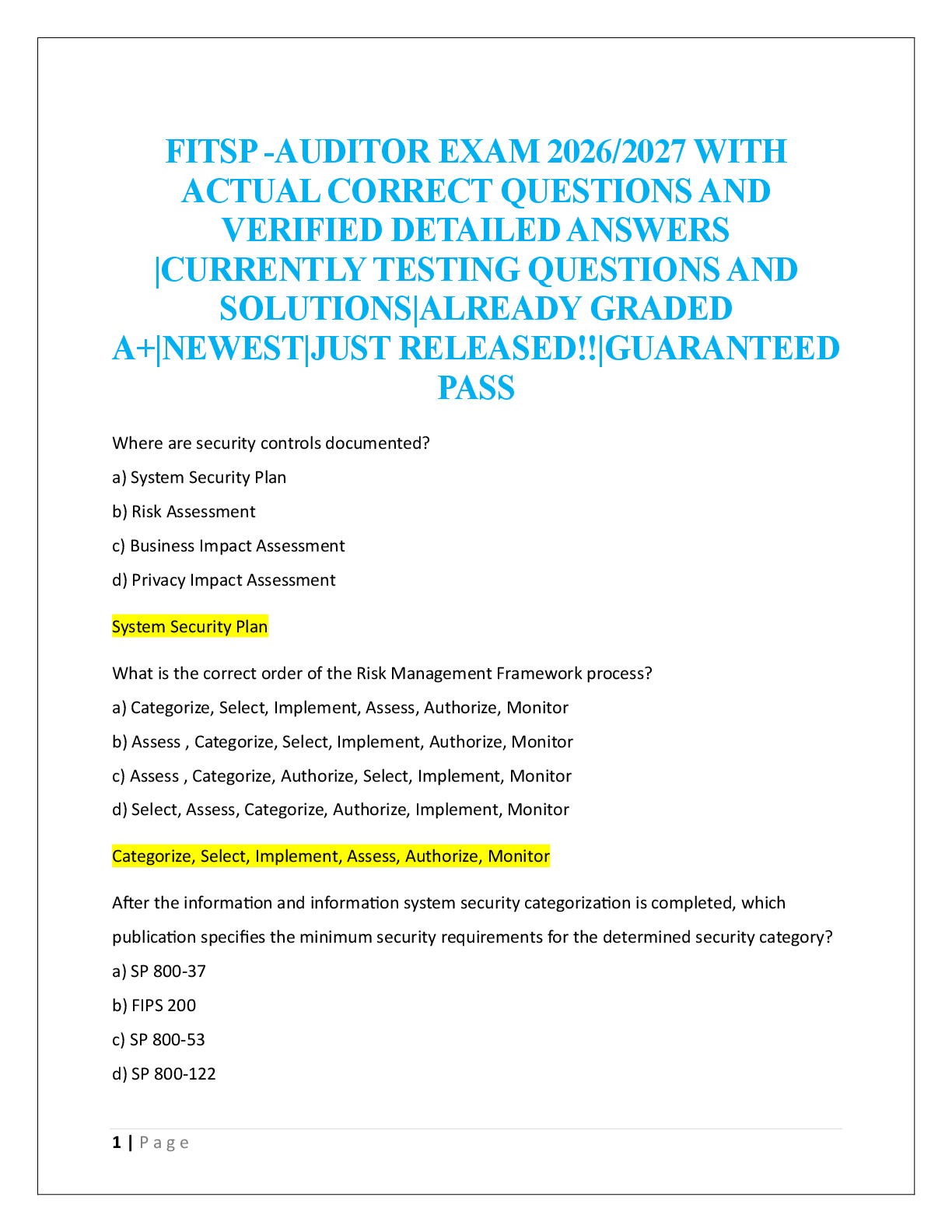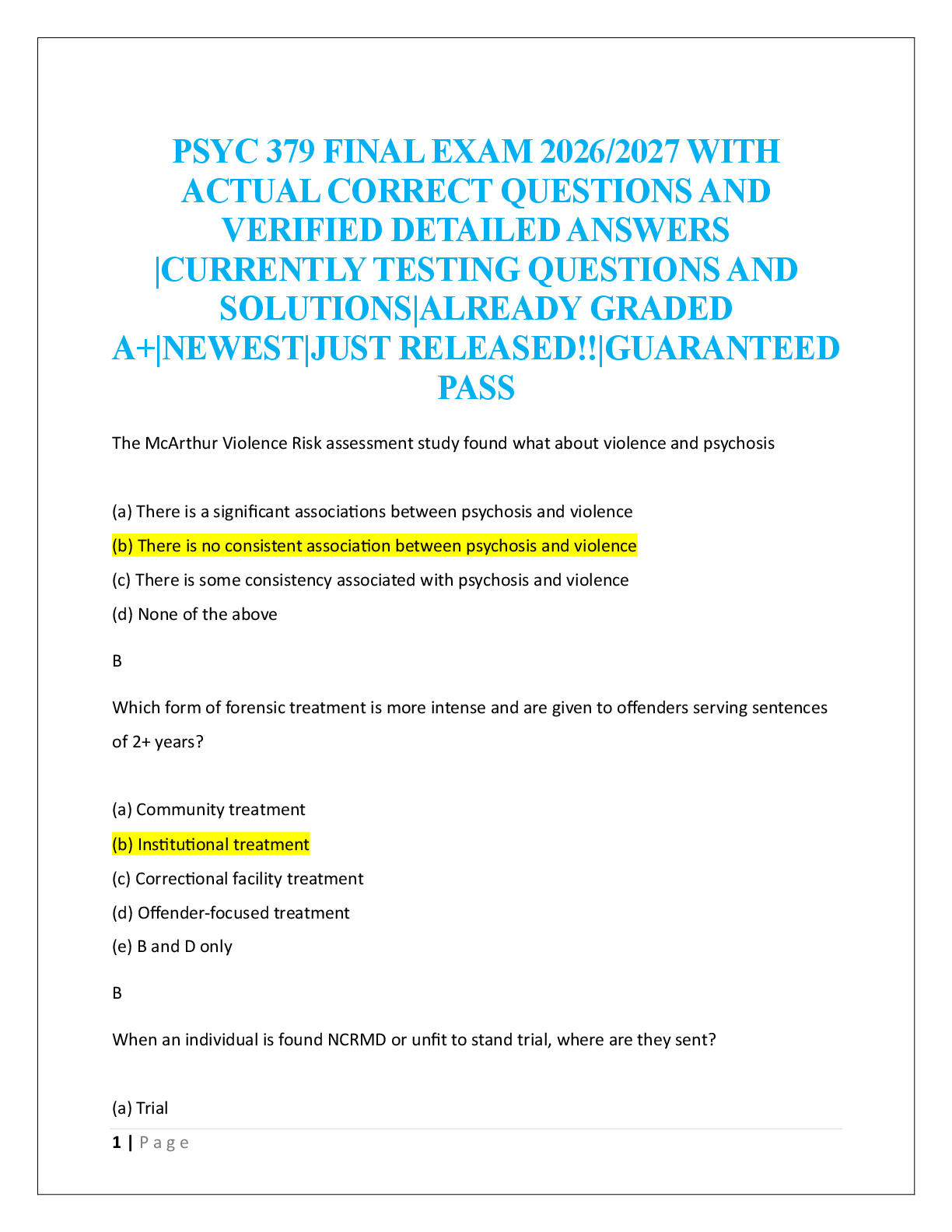*NURSING > EXAM > NR 507 / NR507 Advanced Pathophysiology Midterm Exam Review | Questions and 100% Correct Answers| Gr (All)
NR 507 / NR507 Advanced Pathophysiology Midterm Exam Review | Questions and 100% Correct Answers| Grade A | Chamberlain College
Document Content and Description Below
1. Deficiencies in which element can produce depression of both B- & T-cell function? A. Iron B. Zinc C. Iodine D. Magnesium Instructor Explanation: Deficient zinc intake can profoundly dep ... ress T- & B-cell function. 2. Hypersensitivity is best defined as a(n) A. disturbance in the immunologic tolerance of self-antigens. B. immunologic reaction of one person to the tissue of another person. C. altered immunologic response to an antigen that results in disease. D. undetectable immune response in the presence of antigens. Instructor Explanation: Hypersensitivity is an altered immunologic response to an antigen that results in disease or damage to the host. 3. In a type II hypersensitivity reaction, when soluble antigens from infectious agents enter circulation, tissue damage is a result of A. complement-mediated cell lysis. B. phagocytosis by macrophages. C. phagocytosis in the spleen. D. neutrophil granules & toxic oxygen products. Instructor Explanation: The components of neutrophil granules, as well as the several toxic oxygen products produced by these cells, damage the tissue. 4. What is the mechanism in type III hypersensitivity reactions? A. Antibodies coat mast cells by binding to receptors that signal its degranulation followed by discharge of preformed mediators. B. Antibodies bind to soluble antigens that were released into body fluids & the immune complexes are deposited in the tissues. C. Cytotoxic T lymphocytes or lymphokine-producing Th1 cells attack & destroy cellular targets directly. D. Antibodies bind to the antigen on the cell surface. Instructor Explanation: Most type III hypersensitivity diseases are caused by antigen-antibody (immune) complexes that are formed in the circulation & deposited later in vessel walls or extravascular tissues (Figure 8-3). 5. During a stress response, increased anxiety, vigilance, & arousal is prompted by A. norepinephrine. B. epinephrine. C. cortisol. D. ACTH. Instructor Explanation: Norepinephrine release promotes arousal, increased vigilance, increased anxiety, & other protective emotional responses. 6. Stress-age syndrome results in decreased A. catecholamines. B. ACTH. C. cortisol. D. immune system. Instructor Explanation: Immunodepression is one of the characteristic changes seen in stress-age syndrome. 7. Which hormone increases the formation of glucose from amino acids & free fatty acids? A. Epinephrine B. Norepinephrine C. Cortisol D. Growth hormone Instructor Explanation: One of the primary effects of cortisol is the stimulation of gluconeogenesis or the formation of glucose from noncarbohydrate sources, such as amino or free fatty acids in the liver. 8. What effect does estrogen have on lymphocytes? A. Depression of B cells & enhancement of T cells [Show More]
Last updated: 3 years ago
Preview 1 out of 12 pages

Buy this document to get the full access instantly
Instant Download Access after purchase
Buy NowInstant download
We Accept:

Reviews( 0 )
$11.00
Can't find what you want? Try our AI powered Search
Document information
Connected school, study & course
About the document
Uploaded On
Nov 20, 2020
Number of pages
12
Written in
All
Additional information
This document has been written for:
Uploaded
Nov 20, 2020
Downloads
1
Views
252

